Intro
Discover 5 names for Hydroxyzine, an antihistamine medication, including Atarax, Vistaril, and more, used to treat anxiety, itching, and allergies, with related terms like antihistamines, anxiolytics, and sedatives.
Hydroxyzine is a medication that has been used for various purposes, including treating anxiety, itching, and nausea. It is known by several names, reflecting its different applications and formulations. Here are five names associated with hydroxyzine:
-
Atarax: This is one of the most well-known brand names for hydroxyzine. Atarax is used for the treatment of anxiety and tension, and it is also effective in relieving itching caused by allergies.
-
Vistaril: This is another brand name for hydroxyzine, often prescribed for the treatment of anxiety and tension. It is similar to Atarax but may be preferred in certain clinical situations based on the patient's specific needs and medical history.
-
Hydroxyzine HCl: This refers to the hydrochloride salt form of hydroxyzine, which is commonly used in oral tablets or syrup formulations. The "HCl" denotes the hydrochloride salt, which is used to improve the stability and bioavailability of the medication.
-
Hydroxyzine Pamoate: This is a different salt form of hydroxyzine, known as the pamoate salt. It is used in certain formulations, particularly in capsules or suspensions, and is known for its longer duration of action compared to the hydrochloride form.
-
Ucerax: This is a brand name used in some countries for hydroxyzine, particularly when it is prescribed for itching and skin allergies. Ucerax is essentially the same as Atarax or Vistaril but may be more commonly recognized under this name in certain regions.
Introduction to Hydroxyzine
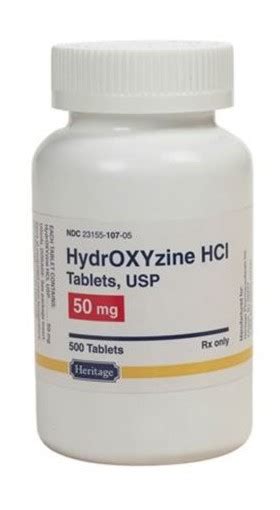
Hydroxyzine is classified as an antihistamine, which means it works by blocking the action of histamine, a substance in the body that causes allergy symptoms. However, unlike some other antihistamines, hydroxyzine has a significant sedative effect, making it useful for treating anxiety and inducing sleep. Its ability to relieve itching and reduce anxiety makes it a versatile medication with a range of applications.
How Hydroxyzine Works
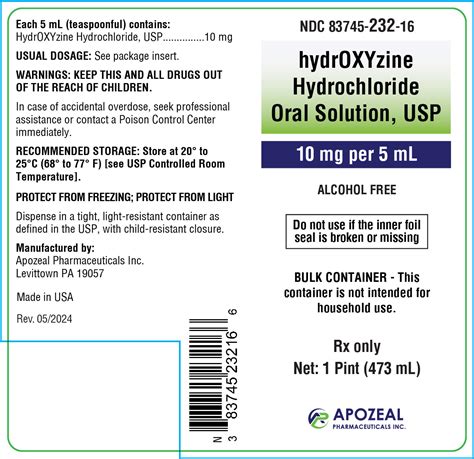
The mechanism of action of hydroxyzine involves the blockade of histamine H1 receptors, which are responsible for mediating the allergic response and causing symptoms like itching, sneezing, and runny nose. By blocking these receptors, hydroxyzine reduces the allergic response and provides relief from itching and other symptoms. Additionally, its action on the central nervous system leads to sedation, anxiolysis (reduction of anxiety), and sometimes, sleep induction.
Benefits of Hydroxyzine
- Sedative Effects: Useful for treating anxiety and insomnia.
- Antihistaminic Effects: Effective in relieving itching and other allergy symptoms.
- Anti-emetic Effects: Can be used to prevent nausea and vomiting.
Uses of Hydroxyzine
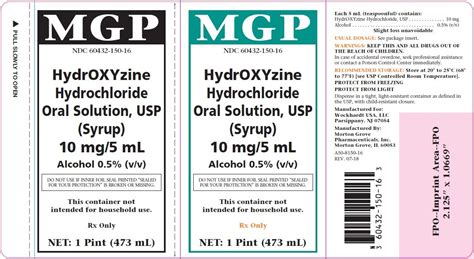
Hydroxyzine has several clinical applications, including:
- Treatment of anxiety and tension.
- Relief of itching due to allergies or skin conditions.
- Prevention and treatment of nausea and vomiting.
- As a sedative for inducing sleep.
Side Effects and Precautions
While hydroxyzine can be an effective medication, it is not without side effects. Common side effects include drowsiness, dry mouth, and dizziness. In some cases, it may cause more serious side effects, such as allergic reactions or increased heart rate. It is essential to use hydroxyzine under medical supervision, especially in elderly patients or those with certain medical conditions.
Dosage and Administration

The dosage of hydroxyzine varies depending on the condition being treated and the formulation used. For anxiety, the typical adult dose is 50 to 100 mg, given orally three or four times daily. For itching due to allergies, 25 mg is often given three to four times daily. It's crucial to follow the doctor's instructions and not to exceed the recommended dose to minimize the risk of side effects.
Interactions with Other Medications
Hydroxyzine can interact with other medications, including sedatives, tranquilizers, and certain antidepressants, leading to increased sedation or other adverse effects. It's essential to inform your healthcare provider about all the medications you are taking before starting hydroxyzine.
FAQs
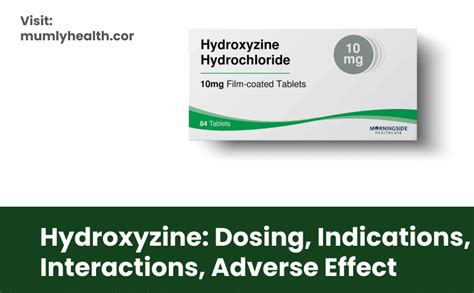
What is hydroxyzine used for?
+Hydroxyzine is used for treating anxiety, relieving itching caused by allergies, and preventing nausea and vomiting.
Can hydroxyzine be used for sleep?
+Yes, hydroxyzine can be used as a sedative to help induce sleep, especially in cases of insomnia or restlessness.
What are the common side effects of hydroxyzine?
+Common side effects include drowsiness, dry mouth, and dizziness. Serious side effects can occur but are less common.
Conclusion and Future Directions
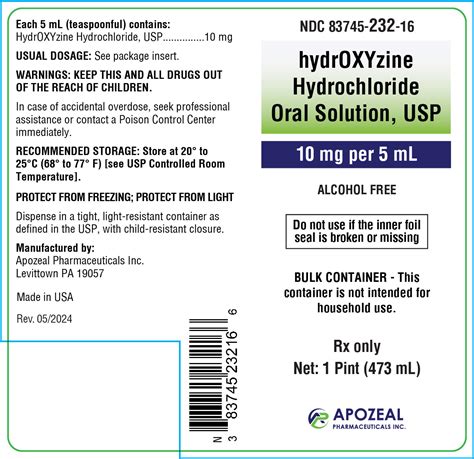
In conclusion, hydroxyzine is a versatile medication with a range of applications, from treating anxiety and itching to preventing nausea. Its sedative effects make it useful for inducing sleep. However, like all medications, it should be used with caution and under medical supervision to minimize the risk of side effects. As medical science continues to evolve, the use of hydroxyzine may expand into new areas, offering relief to more patients. For now, it remains a valuable tool in the treatment of various conditions, providing significant benefits to those who need it.
We invite you to share your thoughts or questions about hydroxyzine in the comments below. If you found this article informative, please consider sharing it with others who might benefit from this information. Your engagement helps us create more content tailored to your interests and needs. Thank you for reading!
